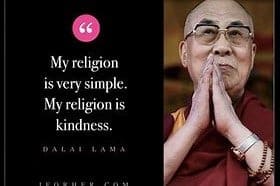It occurred to us this week that it was such a joy to be able to say good morning to someone and smile while doing so. Even though it was outside and at a distance, it seemed so pure and real. The morning was sunny and cool and, for the moment, all seemed right with the world. As epidemiologists identify the current three “C’s” of COVID concerns – Crowds, Close contact, and Close spaces – this makes it even more important to savor those moments of connection. So, at a distance, we smile because in the last couple of years these moments have been challenging and have felt remote and rare. Some say that it takes fewer muscles to smile than frown and that alone makes it an easy work out. In American culture, people tend to greet smiles with a smile while frowns draw return frowns about half of the time. So, there is your choice 😊
Facial self-expression has become more of a challenge with the use of masks so we found ourselves adding a nod of our heads as we smile. We understand that diverse cultures interpret facial expression differently. For example, one study showed that Japanese participants emphasized the upper half of the face when determining trustworthiness whereas Americans focus on the lower half.
But still, the human smile is an important and powerful thing. Researchers have identified the Duchenne smile as one of the most influential expressions that we can make as humans. The smile is named after French anatomist Guillaume Duchenne and is one that reaches from your smiling mouth all the way to your eyes. It is the smile that makes the corners of your eyes wrinkle up in crow’s feet. And, it is said to be the most authentic expression of happiness. Other “necessary” smiles may be seen as polite and well-mannered, but the Duchenne smile is indicative of true enjoyment. From the zygomaticus major muscle at the corners of your mouth to the orbicularis oculi muscles that lift your cheeks and create those crow’s feet, the body experiences something wonderful and joyous – the Duchenne smile. It can elevate your mood, facilitate connecting with others, and decrease stress levels. The smile that reaches all the way to your eyes is perceived as being authentic, trustworthy, and generous.
If you were wondering about the Mona Lisa smile, it has been determined by researchers that hers was a non-Duchenne smile that “reflects a non-genuine emotion and is thought to occur when the subject lies.” She also shows no upper face muscle activation and no crow’s feet. It is said that her smile indicates untrue enjoyment. Oh, poor Mona!
As we smile on, remember that smiling with your eyes and your mouth, while wearing a protective mask, can bridge a gap, forge connections, and even elevate your own mood. So, what’s a couple of more crow’s feet? It may be well worth it for a genuine smile can be priceless. And, for now, as we continue to wear masks, the eyes have it.
“Wrinkles will only go where the smiles have been” – Jimmy Buffett



